Utilising
graphic design
in creating
memorable spatial experiences
Graphic design creates images through visual means, which can be used in various ways to enhance a space’s experience or usability. The graphic elements in a space can support spaces, guide spaces or inspire users.
In order to achieve the desired spatial experience and usability through graphic design, it is essential to understand the overall spatial concept.The design process starts with a deep understanding of the concept, through which visual elements are created to support the image and value message of the brand.
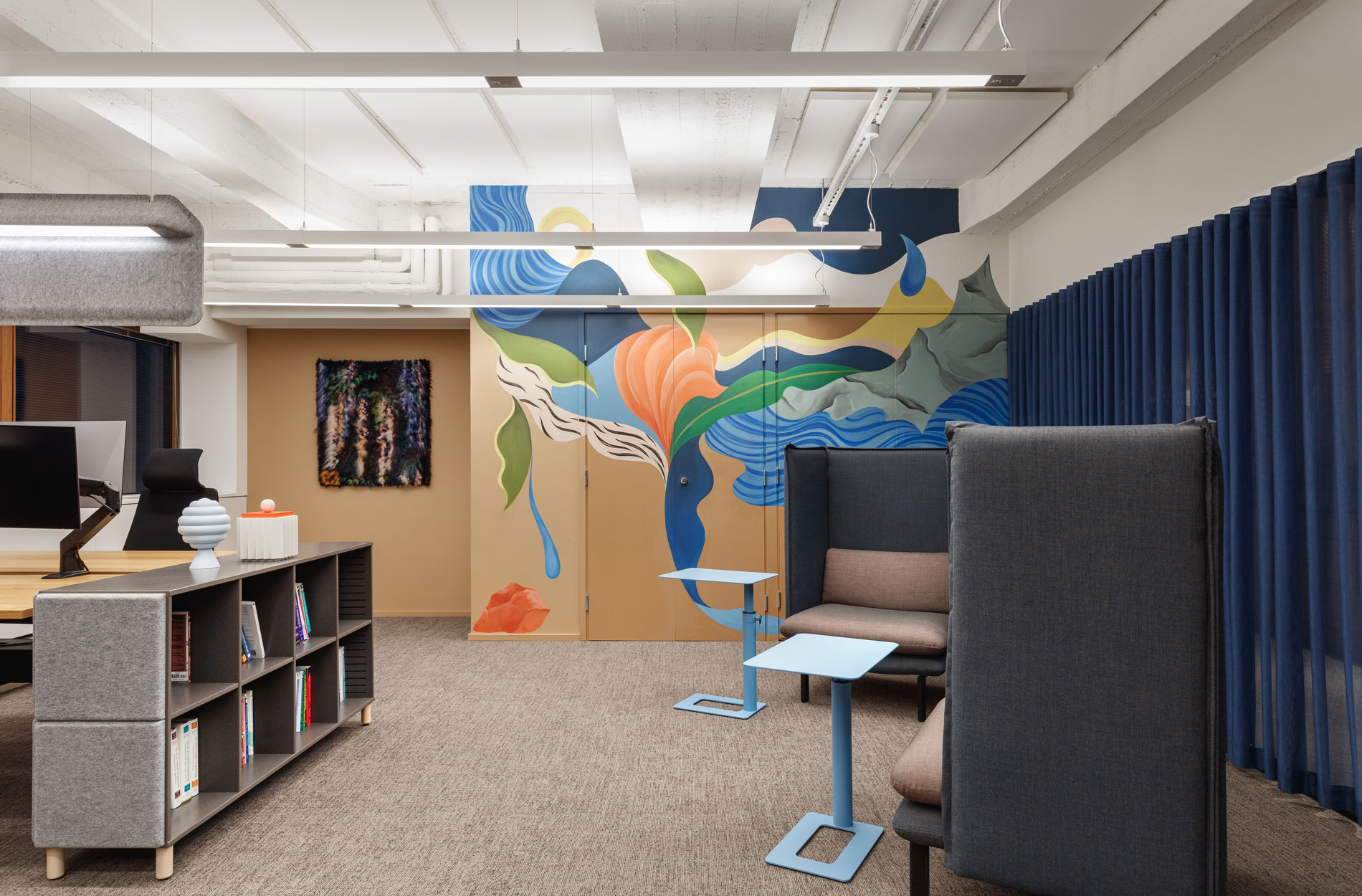
Unity’s spatial artwork was designed in collaboration with the artist and the conceptual designers of the space. The mural was painted by artist Laura Lehtinen.
Enhancing experiences with graphic design in spatial elements
Graphic, spatial elements and visual messages designed into spaces are a substantial part of the experience. Graphic and spatial elements tell a story, completing a desired atmosphere and supporting the user experience. Spaces can provide a sense of experientiality, nourish the soul, and serve as an inspirational space for customers and employees alike.
Whether it be a property, a service or a work environment, graphic details significantly impact a space’s atmosphere. The atmosphere in a space is created by the colours, materials, lighting and furnishings. The graphics in a space can be used in glass wall tapings, carpets, textiles, wallpaper and furniture.
Central to experiential graphic design is always a distinctive narrative and its expression through multi-layered means.
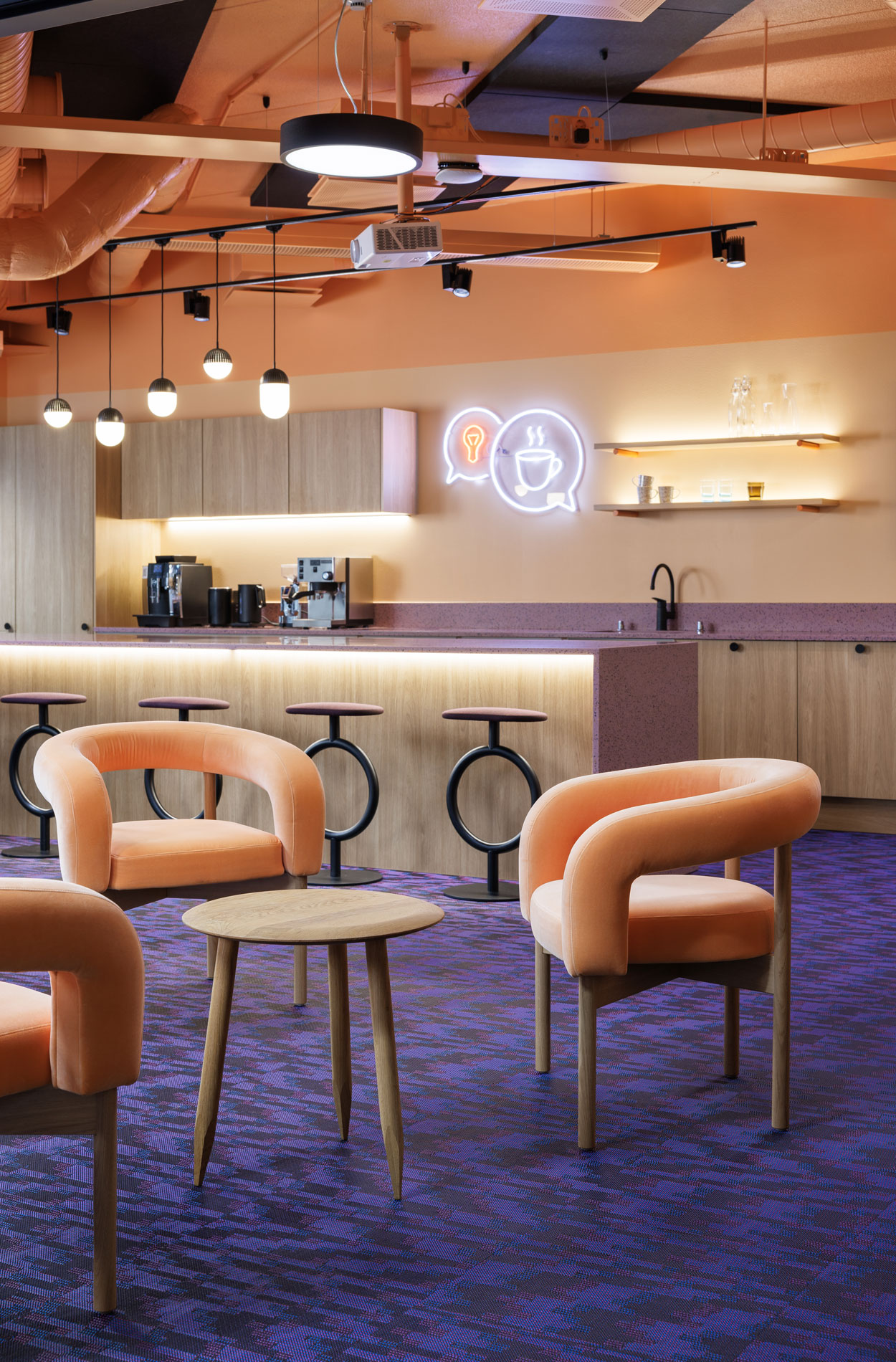
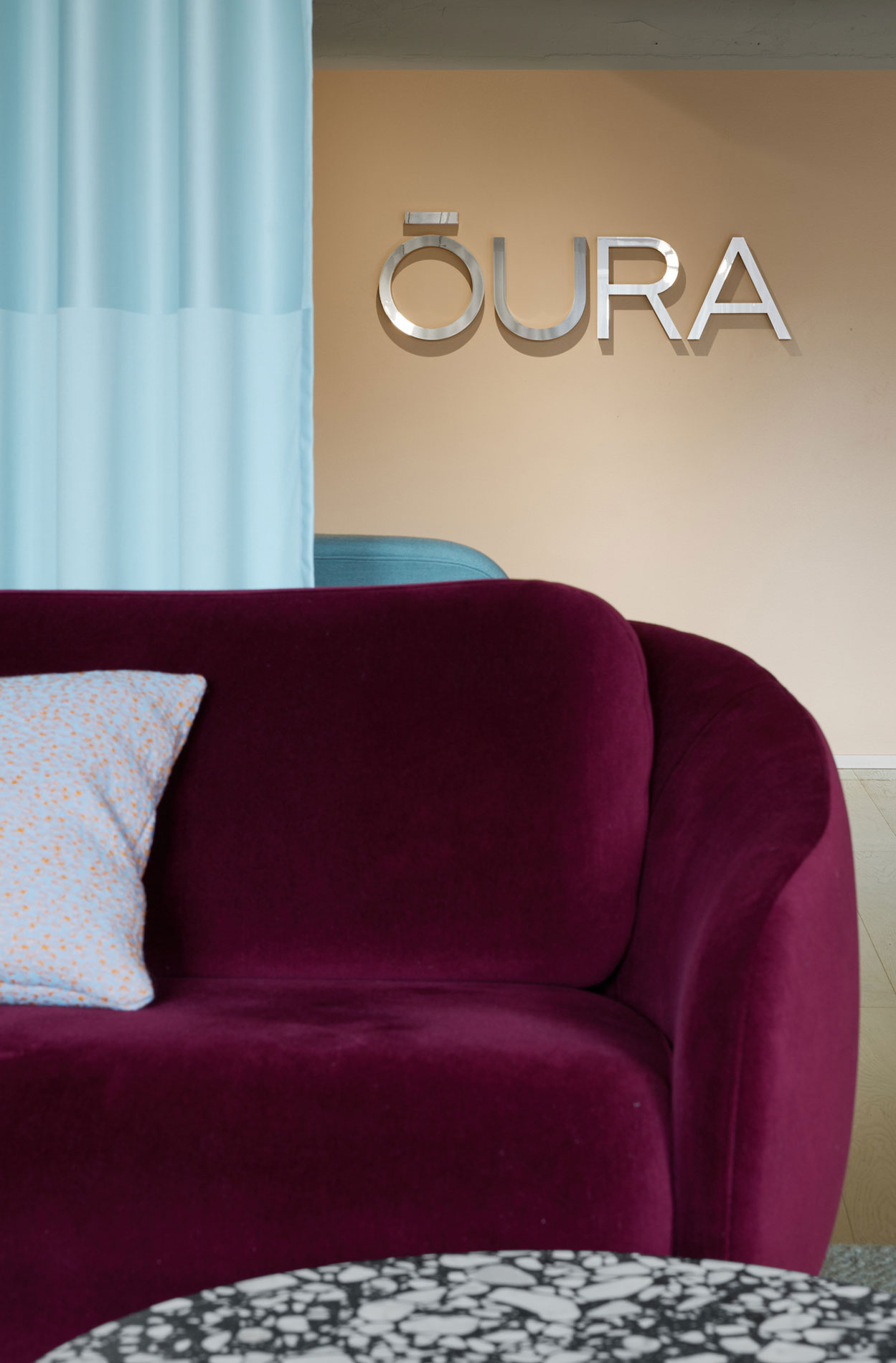
Graphics and improving the usability of spaces
The usability of spaces can be supported by graphic elements that guide the customer in moving and navigating the space. Signage and a sense of safety are essential elements in building the experience of the space. To enhance the end-user experience, it is necessary to accurately present relevant information. Additionally the style of communication and the tone of voice strongly influence the desired experience of the space.
The signage concept often includes directional arrow signs, descriptive location signs, room signs, floor or area maps and possibly outdoor and illuminated signs. Glass wall tapings can enhance the functionality of spaces with different levels of coverage, ranging from translucent to fully opaque. Glass wall taping can vary in style from custom-designed security taping to eye-catching graphic surfaces.
Icons, or pictograms, constitute a large part of signposting. Well-designed, pictograms can communicate universal messages, and the information they present can be understood more quickly than text. Just as writing can communicate a complex message in great detail, pictograms enable non-verbal communication regardless of a shared understanding of language or culture. The positioning of signs is also important from a perceptual point of view; they must be easily accessible or directed to by elements such as the floor material. The colour scheme should be consistent and contrast with the rest of the space’s colour scheme.
The consistency and predictability of the graphic elements ensure that the customer experience remains effortless, consistent and safe. Fragmented and disjointed graphics can cause uncertainty and confusion for the user.
At its best, a well-designed visual spatial identity with graphic elements creates an immersive experience and intuitively guides the user. It expresses and feels the same across all interfaces, from pixels to physical space to print.
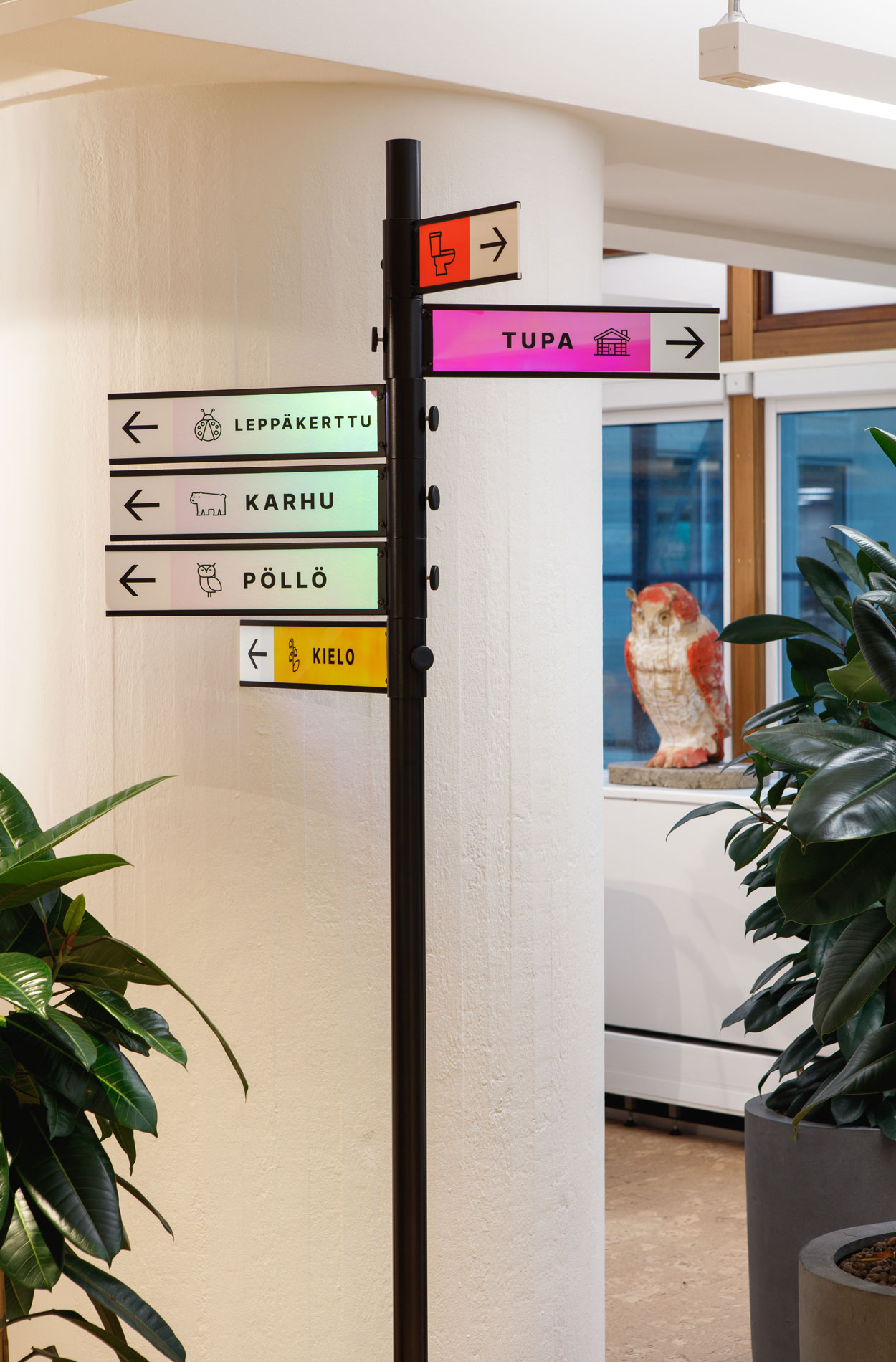

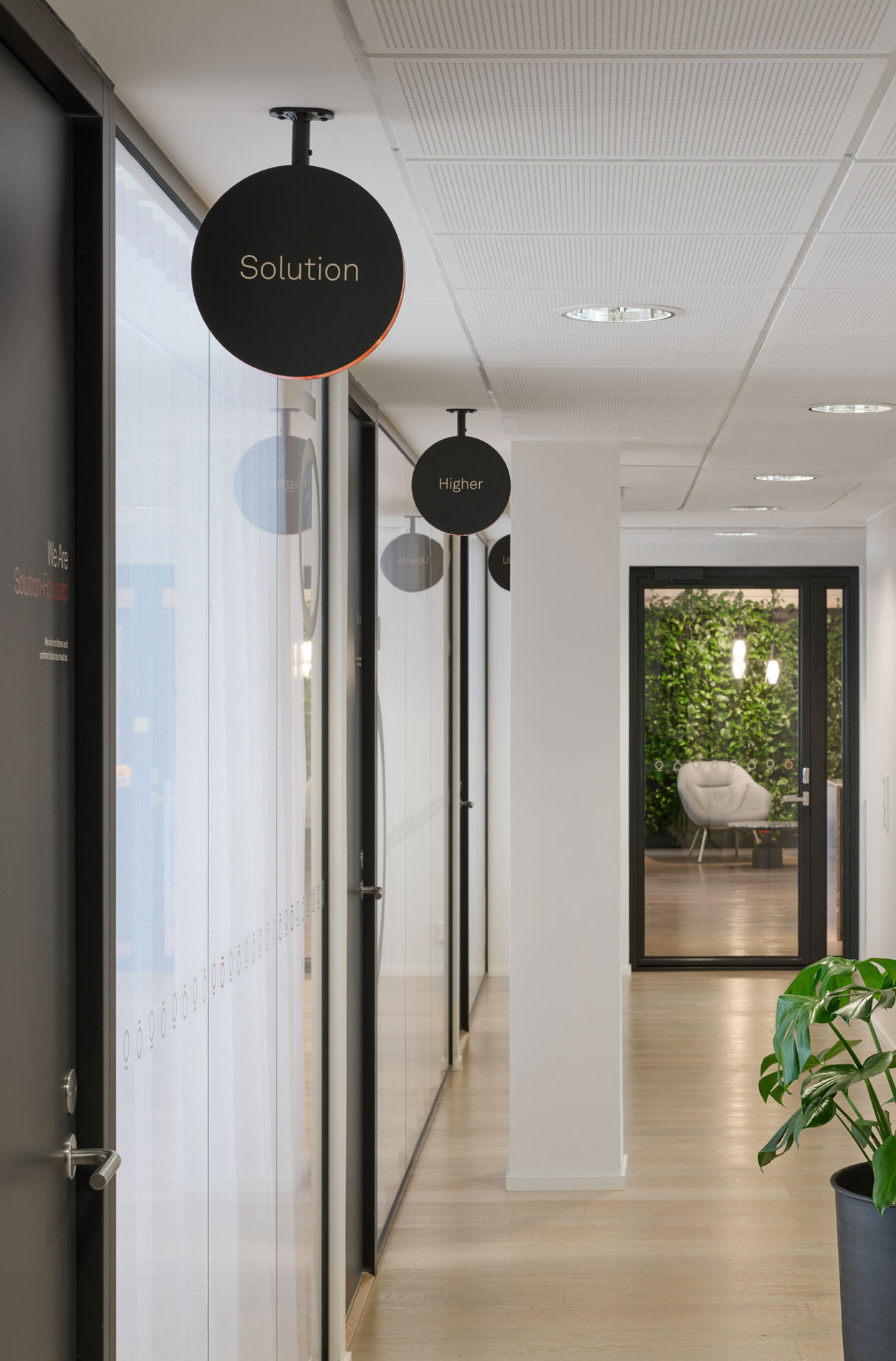
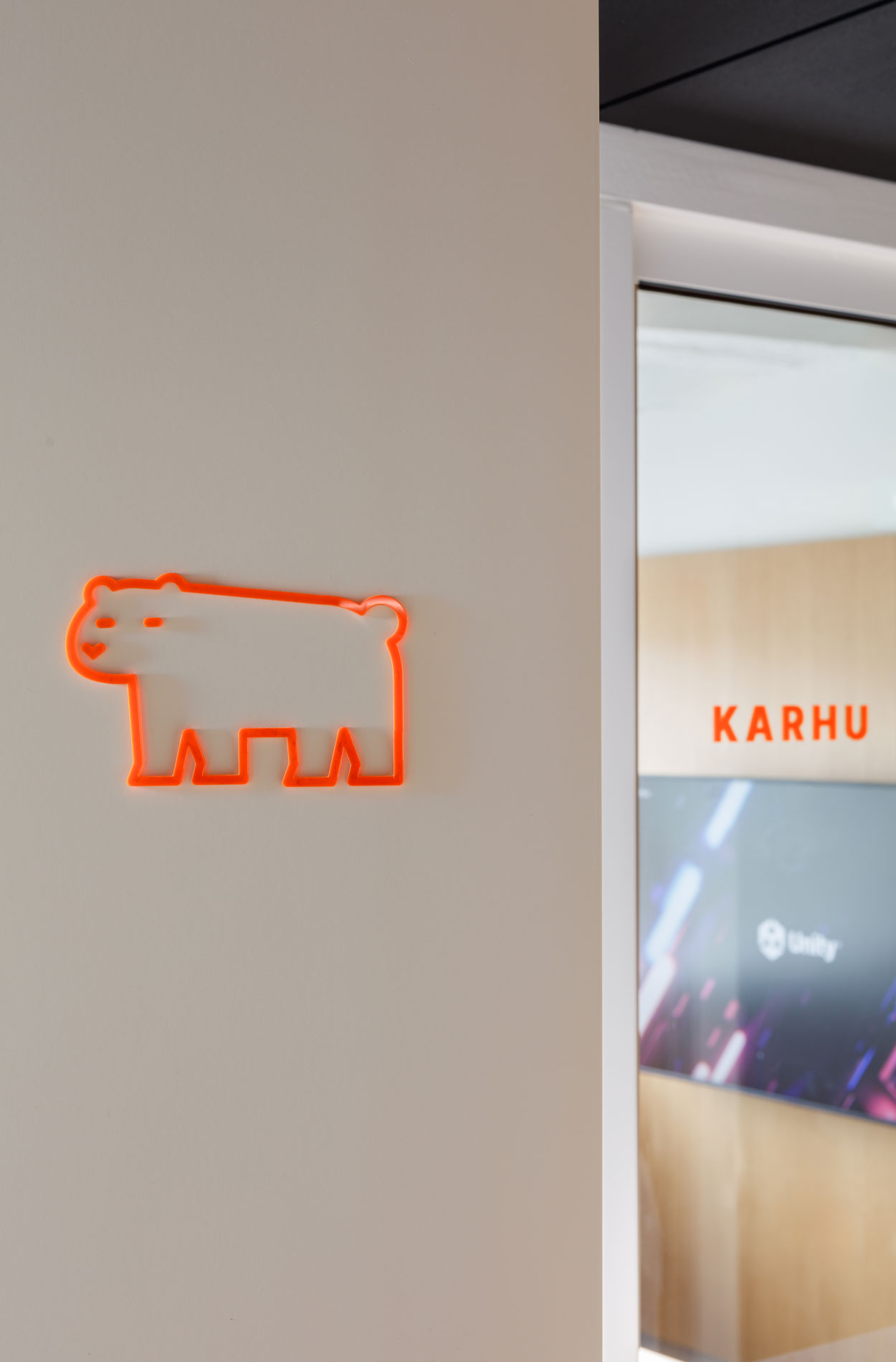
Atmosphere and user experience
When creating a memorable spatial experience through graphic design, it’s important to remember these two things:
- Atmosphere: what should the visual appearance and atmosphere of the space communicate? Is it consistent with the brand and supporting the value message?
- User experience: is the user experience of the space aligned with the intent of the visual identity? Are there any areas of concern in the customer or employee journey that could be improved, for example, through signage?
Interested?
Contact us and let’s talk.